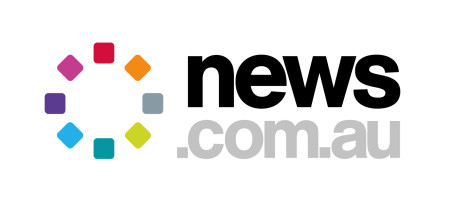Nielsen launches combined mobile and desktop audience numbers and reveal audiences for social sites including Twitter and Snapchat
 Digital industry body IAB and Nielsen have launched Australia’s new digital audience measurement currency, fusing together audiences across desktop and mobile devices for the first time.
Digital industry body IAB and Nielsen have launched Australia’s new digital audience measurement currency, fusing together audiences across desktop and mobile devices for the first time.
The new Digital Ratings (Monthly) replaces the Nielsen Online Ratings which measures the most popular news sites in the country, but also provide an insight into the audience size of services like Twitter and Snapchat.
It aims to give the market a first look at Australia’s total digital audience, de-duplicated, across PC, smartphone and tablet for both web browsers and apps.
Alice Manners, outgoing IAB Australia CEO, told a briefing: “What DRM is doing is capturing and reporting the real year-on-year growth of unique audiences across key digital devices. It allows the market to understand how much duplication there is across devices.
“What this enables us to do by having this enhancement is ensure we maintain market confidence in our trading currency. It’s something we as an Australian marketplace should be proud of.”
DRM fuses together Nielsen’s pre-existing PC panel for home and work, consisting of 7,000 people, with nationally representative panels of Australian smartphone and tablet internet users, consisting of 2,000 smartphone users and 750 tablet users, as well as Census-tagged data for PC and mobile web.
It also uses a single-source panel and an establishment survey in an effort to provide de-duplicated audience figures.
Alex Smith, product leadership – digital content measurement at Nielsen, explained the comparative difference between the PC and Mac panel with the smartphone and tablet panel is “to do with the penetration of the device in the market”.
“Even though there is a lot of usage happening on smartphone and tablet, PC is still the dominant device from a penetration point of view, so we need to be representative of that market penetration,” he said.
The DRM data suggests the total active digital universe in Australia is close to 19.6m people across smartphones, computers and tablets – with 17.951m on computers, 13.170m on smartphones and 7.58m on tablets during February.
Monique Perry, Nielsen’s head of media, said: “There’s a million more people who we’re now capturing who were effectively app only users.”
According to the data for last month, Google, Facebook and Youtube are unsurprisingly the top three sites by unique audience.
For February Google had a unique audience of 19.627m with an active reach of 92.43%, while Facebook had a unique audience of 15.477m with an active reach of 78.86%.
Youtube was in at third place with a unique audience of 13.967m with an active reach of 71.16%.
“The sites and the apps that have set themselves apart as being mobile-led, they see that massive growth. You look at YouTube and Facebook and they’ve got more than 5m stronger unique audience now because clearly they’re very mobile-led,” said Perry.
“Twitter doesn’t quite make the top 20, but it has an audience of 5.5m, which again is mobile-led.”
Looking at the social space, Facebook and Instagram topped the sector, with LinkedIn claiming third with a unique audience of 6.983m.
Twitter was fourth with a unique audience of 5.528m while Pinterest rounded out the top five with a unique audience of 4.545m.
Snapchat posted a unique audience of 3.068m.
In the news and global category, the benefactors of the change in measurement currency were News Corp’s Herald Sun and The Daily Telegraph, which claimed the ninth and 10th slots, respectively.
 News.com.au, Smh.com.au and ABC News Websites continued to hold the top three places they dominated in the old Online Ratings measurement system.
News.com.au, Smh.com.au and ABC News Websites continued to hold the top three places they dominated in the old Online Ratings measurement system.
News.com.au, owned by NewsLifeMedia, posted a February unique audience of 5.499m, ahead of Fairfax Media’s Smh.com.au, which had an audience of 4.709m. ABC News websites grabbed an audience of 4.330m.
Ninemsn news websites claimed fourth place with a unique audience of 3.037m, while The Guardian, which had consistently complained the old system underreported its audience, jumped to fifth with an audience of 2.944m.
Ian McClelland, The Guardian managing director, said in a statement: “This is a huge milestone for us, reaching top five was a goal when we launched the local edition in 2013. We’re on track with our business plan and are bolstering our capabilities in native content, data, video and events to build a sustainable business in Australia.
“The ranking is a testament to our investment in editorial. Our readers recognise The Guardian is a strong, influential and independent voice which is much needed in this country.”
Daily Mail Australia which launched with aggressive plans to be the biggest news site in Australia slips to sixth in the new standings with a unique audience of 2.866m.
Daily Mail boss Peter Holder has been very public with the company’s desire to climb up the Nielsen rankings, telling Mumbrella: “The main goal for us is to get further up in the Nielsen rankings, that’s my biggest priority, and with that other things flow on.”
Fairfax Media’s The Age came in at 7th position with a unique audience of 2.665m, with Yahoo7 news websites was eighth with an audience of 2.607m.
Tom Armstrong, Fairfax Media commercial and marketing services director, said in a statement: “DRM better reflects the fast progress Fairfax Media has made in growing digital audiences, particularly via mobile, ranking Fairfax as Australia’s most popular publisher of quality digital content and journalism, reaching almost 11m people.”
The inclusion of mobile audiences has seen the Herald Sun claim ninth place with a February unique audience of 2.545m and The Daily Telegraph claims 10th with a unique audience of 2.433m. The two News Corp titles bumped the BBC and MSN News from the top 10.
Michael Miller, executive chairman of News Corp Australasia said the company was “delighted with this second stage launch from Nielsen which gives the market insight into audiences across all digital devices for the first time”.
In the statement News claimed to be Australia’s “biggest digital publisher, with a monthly reach of 11.624m” when the audiences across its assets including News.com.au, REA Group and Kidspot are taken into account.
“The data affirms that News Corp Australia is by far and away the best platform to engage with Australians and is a must when planning digital campaigns,” added Miller.
For February, the BBC posted a unique audience of 2.293m while MSN News had a unique audience of 1.815m.
On dropping out of the top 10, Andrew Hunter, MSN executive producer, said: “We expected to drop out of the top 10 due to our relatively lower percentage of mobile users.
“What you will see from us, however, is a continued climb in our overall audience number – including our homepage, news, sport, finance and lifestyle sections – towards 4 million Australians as new Windows 10 users come online.”
The Huffington Post had a February unique audience of 2.185m, The Australian posted an audience of 1.505m, mobile-centric publisher BuzzFeed pulled 2.090m and Mamamia was just shy of the 1m barrier with a unique audience of 962,000.
Miranda Ward








 Linkedin
Linkedin
This is just another death nail in TV
User ID not verified.
Still confused as to why monthly users is still considered a relevant metric. Outrageous that it’s 2016 and this continues to be wheeled out as meaningful.
User ID not verified.
Mr McClelland, that ranking result was out of your control. Please, lets not get over excited here… The Guardian only made it to the top 5 because the Daily Mail lost the support of the ninemsn homepage at the very beginning of February.
“The ranking is a testament to our investment in editorial” Why not attributed to the Easter bunny ?
Soz.
User ID not verified.
Sorry if this is a stupid post and i have note read it correctly….but are we really using a panel of just 2,000 mobile users and 750 tablet users to publish an unduplicated monthly audience across screens?
Am I right in saying that is what the panel sizes are…or have i missed something? I certainly hope i have it wrong!!
User ID not verified.
HelloKitty; That could well be a contributing factor and I didn’t say investment in editorial was the *sole* reason for our current ranking. But we’ve grown considerably and consistently and we’d not be able to do that without continued investment in quality, independent editorial. That’s what Australians return regularly for.
User ID not verified.
Ben S – Digital Ratings (Monthly) is the second of the three-stage plan to transition to a daily, cross-device audience measurement system expected to be launched in mid-2016.
User ID not verified.
… And what would a Daily Mail top 5 position be down too, cos it certainly wouldn’t be an investment in editorial, maybe an ability to cut n paste?
User ID not verified.
This is a great leap forward by Nielsen, and guided by the IAB.
re: Ben S – this is stage 2 / 3 (what comment #6 said) – monthly users is no more/less useful as daily UBs to your client’s website or campaign reach from adserver of X million. It is all stepping stones towards all people, all devices, daily (which no market in the world has yet).
Far from “outrageous” – monthly audience is important for mid-to-small size or category specific publishers that are organised around verticals, specific content, niches, etc. It’s not all about daily audience on facebook and portals. Used combined with total time per person, monthly audience is incredibly useful (single visits per month that last an hour are quite compelling for many publishers or marketers).
I would also argue daily metrics aren’t useful for a large part of the marketing world.
User ID not verified.
Still doesn’t include traffic using the Facebook in-app browser. That will start to see the Nielsen numbers getting close to reality.
User ID not verified.
Some valid points here. Would like to see this however drill down to reach all publishers. Not seeing large desktop players being recognised across mobile devices if they are on Youtube. This seems to be a large flaw and is only benefitting Youtube not the market.
If the plan is to roll the next phase out to measure in app for publishers on hosted platforms then it has much more value.
User ID not verified.
@ Ben S. You know where to contact me if you want to chew the fat.
As others have posted, this is the next stepping stone to daily ratings. Daily data will be important for news publications, but as Sam G explains it is less relevant to publications and sites with less day-to-day content changes, and to marketers with longer repeat purchase cycles (though Sam, I’d rather accumulate the days together than try to accurately estimate daily data from a monthly number!).
And as for Smiffy … I’ll let you off just this once.
User ID not verified.